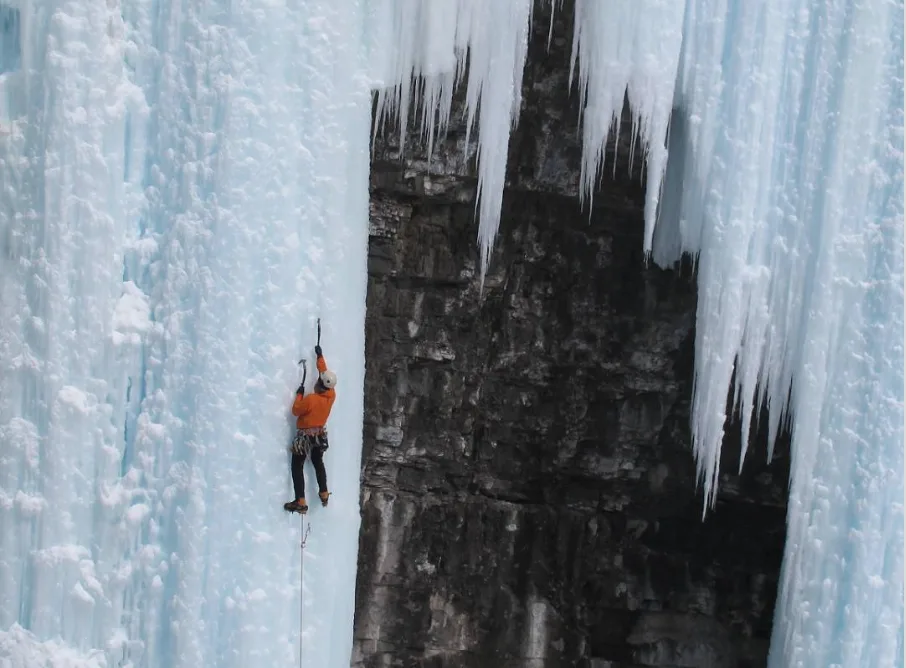
What makes winter risk takers tempt fate? A 'life wish'
Extreme winter sports: Is it worth the risk?
Extreme experiences, from bagging a peak and conquering rapids to free-solo climbing and backcountry skiing, come loaded with inherent risks, but for many that’s what delivers the thrills, the sensation, the payoff.
Vincent Hempall is in it for the “dopamine dump.” Besides extreme rock climbing, the B.C. resident also gets thrills from backcountry skiing, BASE jumping, skydiving and mountain biking.
“Clinging to a steep wall in the mountains gives you a different perspective on the world. It’s thrilling because so few people, if any, have been to that exact location before," he says.
According to Hempsall, a magazine writer and editor at wonowmedia.com, no advancements have ever been made without risk, “but risk is relative. For example, the kind I take are calculated. I very rarely find myself in a situation I consider overly dangerous because of all the training I’ve done. That said, I definitely like pushing my comfort zone.”
It was an unplanned stunt when he almost drowned in the Atlantic Ocean.
“We were on a rock climbing mission on a huge sea cliff in Newfoundland and a strong wind blew my tent into the water. It was night time and I jumped in to rescue it. Stupid. I was hypothermic within a minute. I did manage to save that tent though,” says Hempsall.
Daring Mother Nature brings on close calls for many extreme athletes, and the recent backcountry death hits close to home for Hempsall because he’s known many people who have been caught in avalanches.
"In my opinion, no one should be in the backcountry unless they have their AST2 certification (Avalanche Skills Training). Not unless they’ve been skiing back there for decades…Level 2 teaches you to work with Mother Nature, not against her."
Hempsall believes we’re all wired the same but how we choose to do to stimulate that wiring is different: “Some will become programmers and write new code and some will become athletes and perform new stunts. It doesn’t matter what you’re into, the end goal is a dopamine dump that makes you feel good.”
Step outside and experience new things, advises Hempsall, “otherwise you end up with a singular view of the world and that’s never resulted in any form of positive advancement.”
Dr. Frank Farley has studied thrill seeking and calls it “T behaviour – thrill-seeking/risk-taking behaviour.” Extreme sports types are the great experimenters of life. “They like to engage in uncertain outcomes, get to the edge, rise to exciting challenges, test one’s curiosity about oneself and those challenges, feel fully alive!”
They’re out to pursue a fully-lived life, says Farley, whether through extreme sports or assuming risk in science, the arts, business, exploration, and other areas.
“I believe one will never do major ground-breaking creative work without taking risks, mental and/or physical, going into uncertain/uncharted territory, breaking the rules," he says.
Shaking things up is good for you. Challenge yourself to an “exciting arousal break-out,” says the psychologist and Temple University professor, and get free of the humdrum, if only for a while. Cast aside your predictable, repetitive, boring and often digitally-controlled life. Reframe stressful, fearful experiences as exciting challenges.
Farley says we need to raise peoples’ capacity to handle uncertainty and risk: “Teach risk-taking skills in schools – the fourth R! Most extreme sports are outstanding for building resilience, ability to handle risk and change, and confidence in the face of uncertainty.”
Farley says to keep in mind Charles Darwin’s words: “It is not the strongest of the species that survives, nor the most intelligent, it is the one most adaptable to change.”
Professional extreme athlete Tim Emmett says climbing has not only given him his deepest moments, but the risks have bred confidence, resilience and assertiveness. The well-known, colourful climber has ascended everything from boulders and frozen waterfalls to sea cliffs and the Himalayas, and he also with sky dives, backcountry skis and mountain bikes.
He’s into sports with a “significant risk,” that push the limits. “The closer you get to risk, the more in-tune and present you become. Being in survival mode, sharpens the mind and intensifies the experience,” says Emmett, a professional speaker at timemmett.com.
Everything is calculated, based on his hard-won experience. “Being educated, on top of your game and having done lots of training and preparation, you can mitigate most of the risk in many of these activities. The goal is to put all the odds in your favour,” says the Squamish, B.C. resident.
But bad stuff happens. “I’ve been in an avalanche and I know others who’ve been in an avalanche. It is a high risk activity being in the back country for sure… and those who engage in this activity are aware of the risks involved and do it the best way they can and try to reduce the risk where they can,” says Emmett.
He admits he gave up BASE jumping and wingsuit flying after 10 years in the sport because of a close call. After that jump for the first time, he realized he wasn’t in control, “ I thought – this could kill me.”
Living life to the fullest requires taking on some risk. “We’re surrounded by risk on a daily basis, and some of those risks are really enlightening, fun and engaging experiences, and some are not… like driving on our roads. I think the riskiest thing people do today is looking at their phone while driving!”
“Life is made up of experiences you have while you’re around” and some risk is a catalyst for making things memorable and exciting, adds Emmett. “Otherwise things would be pretty boring.”
WATCH BELOW: A NET ZERO FOOTPRINT: HOW A BC SKI RESORT INSPIRED ONE OF THE LARGEST SKI OPERATIONS IN THE WORLD
Editor's note: This story was originally published in February 2019, and has been updated.










